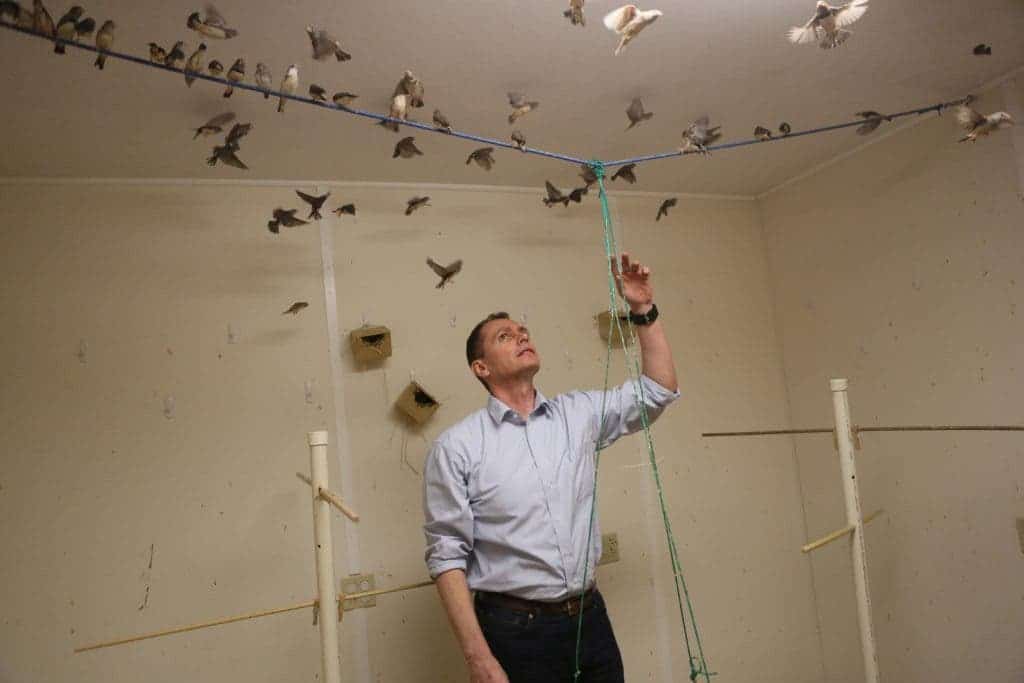The man-made landscape can be deadly for birds. The biggest killer is crashing into an unexpected object, such as a building, cell tower, airplane, or wind turbine. According to the Audubon Society, an estimated 140,000-328,000 birds are killed each year by wind turbines in North America alone. When you combine all the bird deaths from collisions with man-made structures in the world, the number rises to billions.
A behavioural biologist at William & Mary College, John Swaddle, thinks that acoustic deterrence coupled with a deep understanding of bird behaviour can prevent these tragedies.
“The fundamental knowledge of how birds behave and respond to sound helps us derive these new technologies and solutions,” Swaddle said.
The biologist currently has two projects up his sleeve:
Acoustic Lighthouse
Birds usually fly with their bodies aligned on a horizontal plane for optimal aerodynamics. Most birds have their eyes on the side of their skulls so they look down when they are flying and don’t see obstacles ahead. Without human structures, there wouldn’t be so many obstacles at the height that they fly at. The Acoustic Lighthouse gets the birds to look up so that they can see the obstacle in time and move away.
The “lighthouse” consists of a directional speaker placed on a wind turbine or other structure. It makes a noise that alerts the birds and makes them slow down. Birds slow down by lowering their tail feathers into a vertical position and can thus see ahead. They can then adjust their route around the object.
“It’s a bit like someone texting while they’re driving,” said John Swaddle. “If you honk your horn at them, they’ll look up.”

Sonic Net
Sonic Nets also use sound, but in a way to make large groups of birds uncomfortable enough to leave an area. It is already known to work and is in use in several locations.

The way it works is by emitting a sound that masks the birds’ chatter. The birds rely on the sound from other members of the flock to watch for a predator or other dangers. The birds immediately feel at risk by not being able to hear their fellow birds and avoid the area.
“The idea is that we’re broadcasting sounds that maximally interfere with the way birds communicate with each other,” Swaddle said. “If birds can’t talk to each other, their perception of the threat of the area—the predation risk—goes way up. So birds don’t like being in that area.”
The Sonic Nets have been successful in trials and use. The aspect that makes this approach stand out is that birds don’t become habituated to it, like they would to a scarecrow. It would be particularly useful in agriculture when farmers want to keep birds off the field.
Sound is a relatively cheap and easy way to get birds to avoid a danger or site where they are not wanted. Other methods getting birds to avoid wind turbines involves expensive equipment such as GPS and radars, and they are not proven to be effective. If these approaches continue to work in trials and implementation, it could be a life-saver for millions of birds.
Journal reference: John P. Swaddle et al, Using a Sound Field to Reduce the Risks of Bird-Strike: An Experimental Approach, Integrative and Comparative Biology (2017). DOI: 10.1093/icb/icx026
Was this helpful?



